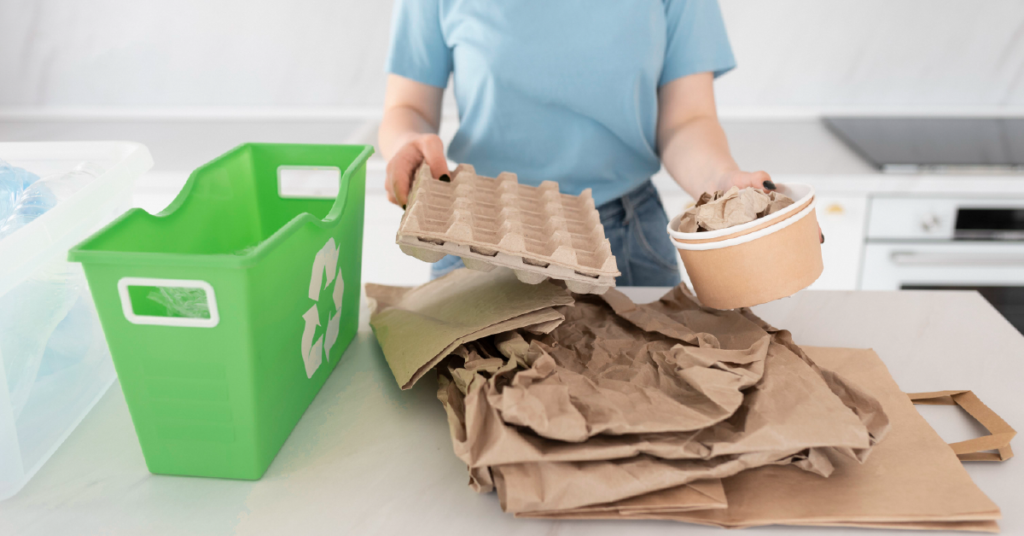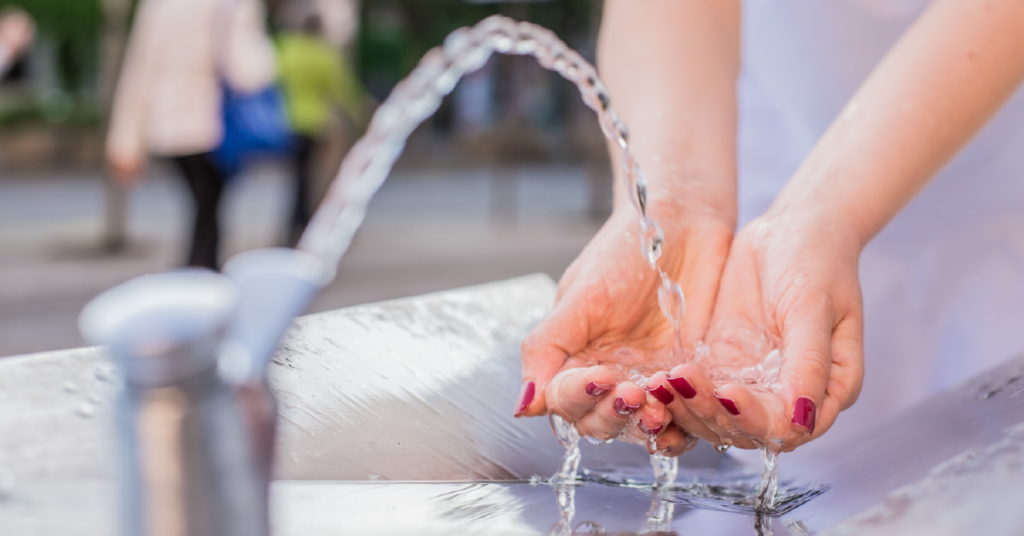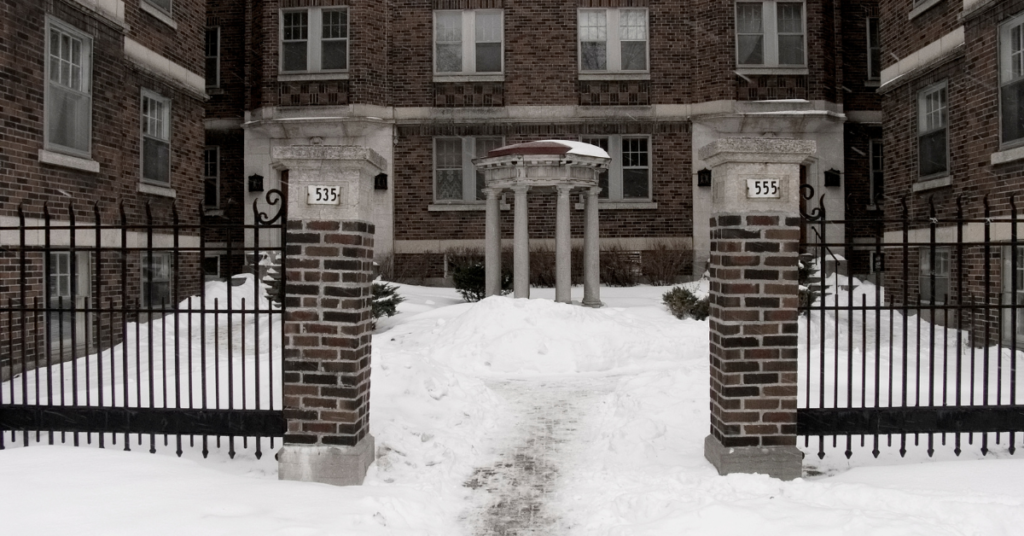Eco-Friendly Living: Top 10 Sustainable Practices for Your Home
In today’s rapidly changing world, the importance of sustainable living cannot be overstated. As we strive to mitigate climate change and preserve our planet for future generations, adopting eco-friendly practices in our daily lives is crucial. In this blog post, we’ll explore the top 10 sustainable practices that renters can implement in their homes to…

In today’s rapidly changing world, the importance of sustainable living cannot be overstated. As we strive to mitigate climate change and preserve our planet for future generations, adopting eco-friendly practices in our daily lives is crucial.
In this blog post, we’ll explore the top 10 sustainable practices that renters can implement in their homes to reduce their environmental footprint and promote a more sustainable way of living.
1. Energy-Saving Appliances
Investing in energy-saving appliances stands as one of the most impactful measures to reduce energy consumption within your home. These appliances are meticulously engineered to operate with minimal electricity usage while delivering top-notch performance.
Whether you’re in the market for a refrigerator, washing machine, dishwasher, or other household appliances, there’s a wide array of energy-saving options to choose from. Let’s delve into the advantages of energy-saving appliances and offer guidance on selecting and utilizing them efficiently.
Benefits of Energy-Saving Appliances
- Reduced Energy Consumption: Energy-saving appliances are adept at minimizing electricity usage, translating to lower energy bills and decreased environmental impact.
- Optimal Performance: Despite their lower energy consumption, energy-saving appliances maintain exceptional performance levels, ensuring that you don’t compromise on functionality or efficiency.
- Environmental Sustainability: By reducing energy consumption, energy-saving appliances contribute to environmental conservation by curbing greenhouse gas emissions and lessening reliance on non-renewable energy sources.
- Long-term Savings: Although energy-saving appliances may entail a higher upfront cost, their efficient operation results in significant long-term savings through reduced utility bills.
Tips for Selecting and Using Energy-Saving Appliances
- Look for ENERGY STAR Ratings: ENERGY STAR-certified appliances meet stringent energy efficiency standards set by the U.S. Environmental Protection Agency, ensuring optimal energy savings.
- Consider Energy Efficiency Labels: Check energy efficiency labels and ratings provided by regulatory authorities to compare the energy consumption of different appliance models before making a purchase.
- Choose the Right Size: Opt for appropriately sized appliances that match your household’s needs to avoid unnecessary energy consumption.
- Utilize Energy-saving Features: Take advantage of energy-saving features such as eco-mode, delay start, and load-sensing technology to further optimize energy usage.
- Regular Maintenance: Maintain your energy-saving appliances by cleaning filters, coils, and vents regularly to ensure optimal performance and efficiency.
By incorporating energy-saving appliances into your home and following these tips for selection and usage, you can significantly reduce energy consumption, lower utility bills, and contribute to a more sustainable future.
2. Water Conservation Methods

Water conservation is integral to sustainable living, and renters can make a substantial impact by adopting simple yet effective water-saving practices. With these strategies, renters can significantly reduce water usage and lessen their environmental footprint.
Here are practical tips for conserving water and introducing water-saving devices and fixtures to enhance efficiency in daily activities:
- Fix Leaks: Regularly check for and promptly repair any leaks in faucets, toilets, and irrigation systems to prevent wastage of water.
- Install Low-Flow Fixtures: Replace old faucets, showerheads, and toilets with low-flow alternatives to minimize water usage without compromising functionality.
- Use Water-Efficient Appliances: Opt for dishwashers and washing machines with high energy-efficiency ratings to conserve water during household chores.
- Collect Rainwater: Install rain barrels or cisterns to collect rainwater for use in gardening and landscaping, reducing reliance on municipal water sources.
- Mulch Garden Beds: Apply a layer of mulch around plants and garden beds to retain soil moisture, reducing the need for frequent watering.
- Water Wisely: Water outdoor plants and lawns early in the morning or late in the evening to minimize evaporation and maximize absorption.
- Use Drip Irrigation: Employ drip irrigation systems in the garden to deliver water directly to plant roots, minimizing runoff and evaporation.
- Capture Greywater: Consider installing a greywater recycling system to reuse water from sinks, showers, and laundry for non-potable purposes like irrigation.
- Practice Responsible Landscaping: Choose drought-tolerant plants and native species for landscaping to reduce water requirements and maintain a sustainable garden.
- Educate and Encourage: Spread awareness among household members about the importance of water conservation and encourage them to adopt water-saving habits in their daily routines.
By incorporating these water-saving practices and investing in water-saving devices and fixtures, renters can make a significant contribution to conserving water resources and promoting sustainability in their homes and communities.
3. Recycling and Waste Management
Proper recycling and waste management are fundamental components of eco-friendly living. By setting up a recycling system at home and adopting mindful consumption habits, renters can reduce waste and minimize their contribution to landfills.
Establishing a Recycling Routine
- Start by identifying recyclable materials commonly used in your household, such as paper, plastic, glass, and metal.
- Designate separate bins or containers for each type of recyclable material to facilitate sorting.
- Educate yourself and your household members about what items can and cannot be recycled in your area.
- Place recycling bins in convenient locations throughout your home, making it easy for everyone to participate.
- Set a regular schedule for emptying and taking out recyclables to ensure they are properly disposed of.
Tips for Reducing Waste Through Composting and Responsible Consumption
- Begin composting organic waste, such as fruit and vegetable scraps, coffee grounds, and eggshells, to create nutrient-rich soil for gardening.
- Invest in a compost bin or set up a compost pile in your backyard. If space is limited, consider indoor composting options like worm bins.
- Reduce food waste by planning meals, storing perishables properly, and using leftovers creatively.
- Choose products with minimal packaging or opt for package-free alternatives when possible to minimize waste.
- Practice mindful consumption by buying only what you need, opting for durable and reusable items over single-use products, and supporting companies that prioritize sustainability.
- Repair or repurpose items instead of immediately discarding them, extending their lifespan and reducing waste.
By incorporating these practices into your daily life, you can establish a sustainable recycling routine and significantly reduce waste through composting and responsible consumption.
4. Energy-Efficient Lighting
Switching to energy-efficient lighting options, such as LED bulbs, is an easy and effective way to save energy and reduce electricity costs. Energy-efficient lighting offers numerous benefits for both the environment and your household budget.
By switching to options like LED bulbs, you can significantly reduce energy consumption, lower electricity costs, and decrease your carbon footprint. Additionally, energy-efficient lighting tends to last longer than traditional incandescent bulbs, saving you money on replacements over time.
Tips for Optimizing Natural Light and Minimizing Artificial Lighting Usage
- Maximize natural light by keeping windows clean and unobstructed. Consider using sheer or light-colored curtains that allow sunlight to filter through while maintaining privacy.
- Arrange furniture to capitalize on natural light sources, positioning seating areas and workspaces near windows.
- Use mirrors strategically to reflect natural light into darker areas of your home, brightening the space without additional energy usage.
- Make a habit of turning off lights when they’re not needed, especially during daylight hours. Install motion sensors or timers to automatically control lighting in less frequently used areas.
- Choose task lighting options, such as desk lamps or under-cabinet lights, to provide targeted illumination where it’s needed most without lighting up entire rooms.
Proper Disposal Methods for Old Light Bulbs
When disposing of old light bulbs, it’s essential to follow environmentally responsible practices to minimize harm to the environment. Here’s how:
- Compact Fluorescent Lamps (CFLs): CFLs contain a small amount of mercury and should not be thrown in the regular trash. Check with your local recycling center or hardware store to see if they accept CFLs for recycling. Some retailers may offer recycling programs for these bulbs.
- Incandescent Bulbs: While incandescent bulbs don’t contain hazardous materials like CFLs, they still contribute to landfill waste. Consider donating working incandescent bulbs to organizations or individuals who can use them, or look for recycling options in your area.
- LED Bulbs: LED bulbs are not hazardous and can be safely disposed of in the regular trash. However, if your community offers recycling programs for LED bulbs, consider taking advantage of them to promote sustainability.
By optimizing natural light, minimizing artificial lighting usage, and properly disposing of old light bulbs, you can embrace energy-efficient practices and contribute to a more sustainable home environment.
5. Reducing Energy Consumption
In addition to energy-saving appliances and lighting, there are several strategies renters can employ to reduce overall energy consumption in their homes.
Optimizing Heating and Cooling Systems
- Invest in programmable thermostats: Set your heating and cooling systems to operate at lower temperatures during times when you’re away from home or asleep, and higher temperatures when you’re awake and active.
- Maintain your HVAC system: Regularly clean or replace air filters to ensure efficient airflow and reduce energy consumption. Schedule annual maintenance checks to identify and address any issues that could affect system performance.
- Seal drafts: Inspect doors, windows, and ductwork for air leaks and seal them with weather stripping or caulking to prevent heat loss in the winter and cool air loss in the summer.
- Utilize fans: Ceiling fans and portable fans can help circulate air more efficiently, allowing you to lower your thermostat in the winter and raise it in the summer without sacrificing comfort.
- Take advantage of natural heating and cooling: Open curtains during the day to allow sunlight to warm your home in the winter, and use shades or blinds to block out sunlight and reduce heat gain in the summer.
Unplugging Electronics When Not in Use
- Use power strips: Plug electronics into power strips and turn the strip off when devices are not in use. This prevents standby power consumption, also known as “vampire power,” which occurs when electronics continue to draw power even when turned off.
- Unplug chargers: Chargers for phones, laptops, and other devices continue to draw power even when not actively charging. Unplug them from the outlet when not in use to save energy.
- Enable sleep or power-saving modes: Configure computers, printers, and other electronics to enter sleep or power-saving modes after periods of inactivity to reduce energy consumption.
Utilizing Power Strips to Eliminate Standby Power Consumption
- Identify energy vampires: Identify electronics and appliances that consume standby power, such as TVs, gaming consoles, and kitchen appliances with digital displays or clocks.
- Plug these devices into power strips: Plug these devices into power strips that can be easily turned off when not in use. Look for advanced power strips that automatically cut off power to devices when they’re not in use or have entered standby mode.
- Use timers or smart plugs: Consider using timers or smart plugs to schedule power to certain devices, ensuring they’re only powered on when needed and reducing standby power consumption.
By implementing these tips, renters can optimize their heating and cooling systems, reduce standby power consumption, and lower their overall energy usage, leading to cost savings and a reduced environmental impact.
6. Green Transportation
Choosing sustainable transportation methods is another key aspect of eco-friendly living. By walking, biking, carpooling, or using public transportation, renters can significantly reduce their carbon footprint and contribute to cleaner air and reduced traffic congestion.
7. Indoor Air Quality
Indoor air quality (IAQ) plays a critical role in our overall health and well-being, as we spend a significant amount of time indoors, especially in our homes. Poor indoor air quality can lead to various health issues, including respiratory problems, allergies, headaches, fatigue, and exacerbation of existing conditions such as asthma and allergies.
Enhancing indoor air quality through natural means is not only beneficial for our health but also for creating a more comfortable and pleasant living environment.
Here are some practical tips for improving indoor air quality naturally:
Ventilation
Proper ventilation is essential for circulating fresh air throughout your home and reducing indoor air pollutants. Open windows and doors when weather permits to allow for cross-ventilation and the exchange of indoor and outdoor air. Additionally, use exhaust fans in kitchens and bathrooms to remove excess moisture and odors.
Air-Purifying Plants
Incorporating indoor plants can help remove airborne toxins and pollutants, while also adding a touch of greenery to your living space. Some plants known for their air-purifying properties include spider plants, peace lilies, snake plants, pothos, and bamboo palms. Be sure to research the specific care requirements of each plant and choose varieties that are safe for pets if you have them.
Natural Cleaning Products
Many conventional cleaning products contain harsh chemicals and volatile organic compounds (VOCs) that can contribute to indoor air pollution. Opt for natural, eco-friendly cleaning products or make your own using simple ingredients like vinegar, baking soda, and essential oils. These alternatives are safer for your health and the environment.
Control Humidity
Maintaining optimal humidity levels in your home can help prevent mold and mildew growth, which can negatively impact indoor air quality. Use a dehumidifier in damp areas such as basements and bathrooms to reduce moisture levels, and use a humidifier in dry environments to add moisture to the air during colder months.
Regular Cleaning and Dusting
Dust, pet dander, and other particles can accumulate in your home and contribute to poor indoor air quality. Regularly dust surfaces, vacuum carpets and upholstery, and wash bedding to reduce the buildup of allergens and pollutants. Be sure to use a vacuum cleaner equipped with a HEPA filter to capture small particles effectively.
Avoid Smoking Indoors
Tobacco smoke contains numerous harmful chemicals and carcinogens that can significantly degrade indoor air quality. If you or someone in your household smokes, make it a rule to do so outdoors to prevent exposure to secondhand smoke indoors.
8. Sustainable Shopping Habits

Mindful consumption is essential for promoting sustainability. By making environmentally friendly purchasing decisions and supporting eco-friendly products and packaging alternatives, renters can minimize their environmental impact.
Here are some tips for making informed choices that align with eco-friendly values:
Prioritize Quality Over Quantity
Invest in high-quality, durable products that are built to last. While they may have a higher upfront cost, they often save money in the long run by reducing the need for frequent replacements.
Choose Eco-Friendly Materials
Opt for products made from sustainable, renewable, and biodegradable materials such as organic cotton, bamboo, hemp, recycled plastics, and reclaimed wood. Avoid items containing harmful chemicals or materials that are non-recyclable or difficult to dispose of responsibly.
Reduce Packaging Waste
Look for products with minimal or recyclable packaging to minimize waste. Consider buying in bulk or choosing products with refillable containers to reduce single-use packaging. Bring reusable bags and containers when shopping to avoid plastic bags and packaging altogether.
Support Ethical and Transparent Brands
Research brands and companies to ensure they uphold ethical labor practices, fair wages, and environmentally responsible manufacturing processes. Look for certifications such as Fair Trade, B Corp, and USDA Organic to verify a brand’s commitment to sustainability and social responsibility.
Shop Local and Seasonal
Support local businesses and farmers’ markets to reduce the carbon footprint associated with transportation and distribution. Choose locally produced goods whenever possible. Opt for seasonal fruits and vegetables to minimize the environmental impact of food production and transportation.
Embrace Secondhand and Vintage
Explore thrift stores, consignment shops, and online marketplaces for secondhand clothing, furniture, electronics, and other items. Buying pre-owned goods not only reduces waste but also extends the lifespan of products and conserves resources.
Consider Minimalism and Mindful Consumption
Practice mindful consumption by asking yourself if a purchase is necessary and aligns with your values. Embrace minimalism by decluttering and simplifying your possessions, focusing on experiences over material possessions, and prioritizing meaningful purchases that bring lasting joy and utility.
9. Community Engagement
Community involvement is vital for promoting sustainability on a larger scale. By participating in local environmental initiatives and events, renters can contribute to positive change in their communities.
Conclusion
Adopting sustainable practices in your home doesn’t have to be complicated or expensive. By implementing Green Ocean Property Management‘s top 10 sustainable practices for your home, renters can make a significant impact on the environment. Let’s take action today to create a more sustainable future for ourselves and future generations.
Ready to make a positive impact on the planet? Contact us today to learn more about implementing sustainable practices in your property management efforts.
Winter Property Maintenance Checklist: Essential Steps for Landlords
Boston’s winters are renowned for their severity, with plunging temperatures, relentless snow, and ice. For property owners, this can spell trouble if they are not adequately prepared. The challenges posed by such a climate include managing snow and ice buildup, combating the freezing of pipes, and maintaining heating efficiency throughout the season. Understanding and addressing…
Why Property Inspections and Walkthroughs are Important
The majority of our clients live either out of the state or out of the country. If they don’t live locally, they have other things to do with their time other than walking through their property. Some of them haven’t been in their properties in years, and that is where we help them. We…
Why I Also Wanted to Be a Licensed Home Inspector
Becoming a licensed home inspector means putting in the hours to get certified. But even if it means more work, I also get to be more qualified as a property manager. Today, I’m sharing with you why I also got a home inspector certification. Becoming a Licensed Home Inspector A home…








